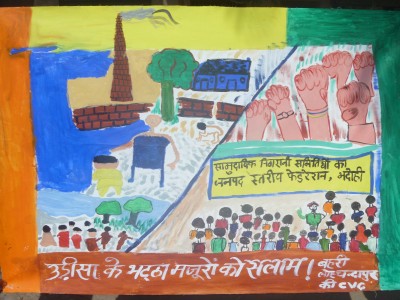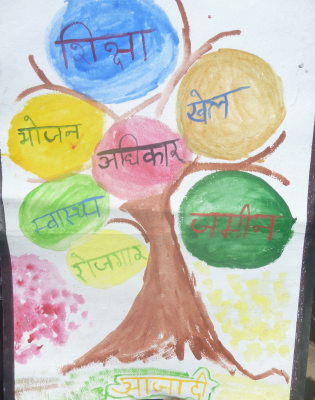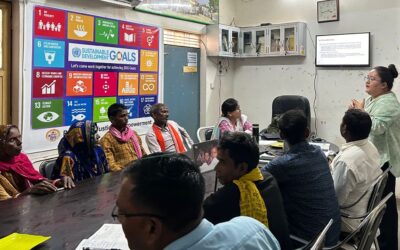They said it simply, and artistically: Freedom is possible.
The artists were slavery survivors in northern India, members of the Federation of Former Slaves, organized by the Free the Slaves frontline partner group MSEMVS.
Their mission was to create a gesture of solidarity and hope for those still enslaved. Both adults and children joined in.
The adults painted an illustration that depicts communities getting organized, demanding their rights, and overcoming the agents of slavery in India’s brick manufacturing industry.
The children painted a tree of freedom, showing that employment, health, food, land, human rights, schooling and playtime are the fruits of independence from slaveholders.

 The canvases were sent to a meeting of enslaved brick kiln workers in the state of Odisha. Every year, thousands of impoverished Odisha villagers are taken by traffickers to brick factories far from home, where they are forced to work 12-15 hours a day for six months without pay.
The canvases were sent to a meeting of enslaved brick kiln workers in the state of Odisha. Every year, thousands of impoverished Odisha villagers are taken by traffickers to brick factories far from home, where they are forced to work 12-15 hours a day for six months without pay.
The villagers of Odisha are just beginning to get organized to resist traffickers and slavery. The inspirational canvases helped communicate that those who are now free stand ready to help.
Learn more about Free the Slaves programs in India on our India webpage, including video of Free the Slaves teaching child slavery survivors how to paint.



